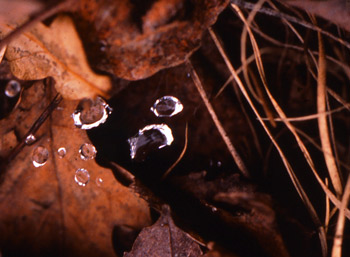|

As we have developed ecosystem-based conservation planning over the years, we have performed reviews of the scientific literature that provide guidance on various aspects of EBCP. Some of our literature reviews are found below. The most current literature supporting EBCP is cited in our book, Maintaining Whole Systems on Earth’s Crown. For more information about the book and to order, see Maintaining Whole Systems on Earth’s Crown. You can also find links to current scientific information at Key Information.
Brief Literature Review of the Douglas-fir Bark Beetle, 2001
Assesing the Ecological Impacts of Timber Management: Apparent Impacts, Actual Impacts, and Precautionary Forest Development; A Literature Review by the Silva Forest Foundation, May 1999
Efforts to understand and plan for the actual impact that past and proposed forest development activities have on landscapes, forest ecosystems, habitat quality, wildlife population dynamics, and hence biodiversity, must take edge effects into account. A basic first step is to assess the spatial extent of possible edge effects during forest development planning, and describe that extent on operational planning maps. Only then can decision makers, affected First Nations, and the public fully appreciate the implications of alternative forest management scenarios in terms of their impacts on landscape ecology and biodiversity.
Riparian Ecosystem Management Literature Review, 1998
Humans and Fire in Dry Forests, 1998
This brief report addresses fire history and fire management issues in dry site forests in western North America. Such forests are found throughout central British Columbia, and the western States, in the rain shadow east of the coastal mountain ranges. Fire once played a major role in the dry climate forest ecosystems in the Pacific Northwest. Ecologists now understand that frequent light ground fires maintained a sparse understory vegetation layer of fire adapted species and an open lower forest canopy. Ecologists have concluded that fire suppression has caused undesirable ecological modifications to dry climate Douglas-fir forests. The formerly open old growth Douglas-fir forests are now choked with dense Douglas-fir regeneration. We believe that this condition is unnatural, poses a high fire hazard, reduces wildlife habitat values, and may be contributing to forest stress and forest decline by placing too great a demand on limited water resources. The dense understory may be an important contributing factor in the increase in Douglas-fir bark beetle populations.
Riparian Zone Protection for Small Streams: A Brief Review of the Literature, 1997
Landscape Corridors, 1995
Evan McKenzie (R.P.Bio) assembled this literature review on connecting corridors during a land use planning process in our area. The SFF advocates the use of corridors in landscape planning (see documents below), but corridors are far from a perfect solution to the landscape level problems caused by human resource exploitation. This paper summarizes the arguments in support of corridors, but also highlights the problems and nagative impacts which corridors may cause. The conclusion, such as it is: Corridors are needed in managed landscapes, but they are not a cure all or an "ecological justification" for unrestrained landscape modification in the area between corridors. We need both corridors and an intact, functioning ecosystem.
Mountain Pine Beetle, 1989 (updated 1993)
In order to understand the potential for the control of the mountain pine beetle through environmental management, it is necessary to understand the life habits and environmental requirements of the beetle and its host. This document is a literature review (with bibliography) presenting detailed information about the ecology and interrelationship of the beetle and lodgepole pine. Topics discussed include beetle life cycle and ecology, population phases, and both theoretical and practical aspects of management and control options that exploit weak links in the beetle's population dynamics.
Landscape Ecology Overview, 1992
Current timber management philosophies and techniques operate primarily at the forest stand level, rather than at the landscape level. As a result, given current logging methods, forest landscapes are often fragmented, critical landscape connections are broken, habitats are lost, and non-timber forest values such as wilderness, water, and balanced allocation of human uses are put at risk. Ecosystem-based forest use requires that forest use planners consider both the stand level ecology and the landscape ecology of a forest.
Stand level ecology is familiar to most foresters and forest users as the combination of ecological factors that determines the biological community occupying any specific forest site, and the biological productivity of that site. However, forest stand ecosystems do not function in isolation. Every forest stand is connected to other forest stands by the movement or flow of water, energy, nutrients, plants, and animals across the landscape.
Landscape ecology recognizes that the landscape is the framework within which stand level ecosystems function. This document is a literature review (with bibliography) of the major concepts of landscape ecology, including: history and origin, basic definitions, time and space, heterogeneity, connectivity. A discussion of the application of landscape ecology to forest management is also presented.
Old Growth Ecology, 1991
The term "old growth forest" refers to two separate but related concepts: 1) a phase in the life cycle of all forests, and 2) a critical part of the functioning forest landscape.
We know old growth forests are important, but we do not fully understand their functions, the life forms they support, or their importance to landscape ecology. The genetic information that ancient forests contain has never been assessed. Both common sense and present knowledge indicate the danger of eradicating old growth from the forest landscape, or even reducing the proportion of old growth forests beyond a certain, unknown point.
This document is a literature review of old growth forest ecology, that discusses: composition, structure, and function in old growth ecosystems; the effects of fire and other natural disturbances in various forest types; the roles and habitats of vertebrate and invertebrate species in old growth forests; the significance of mycorhizal fungi and the unseen components of old growth forests.
|

